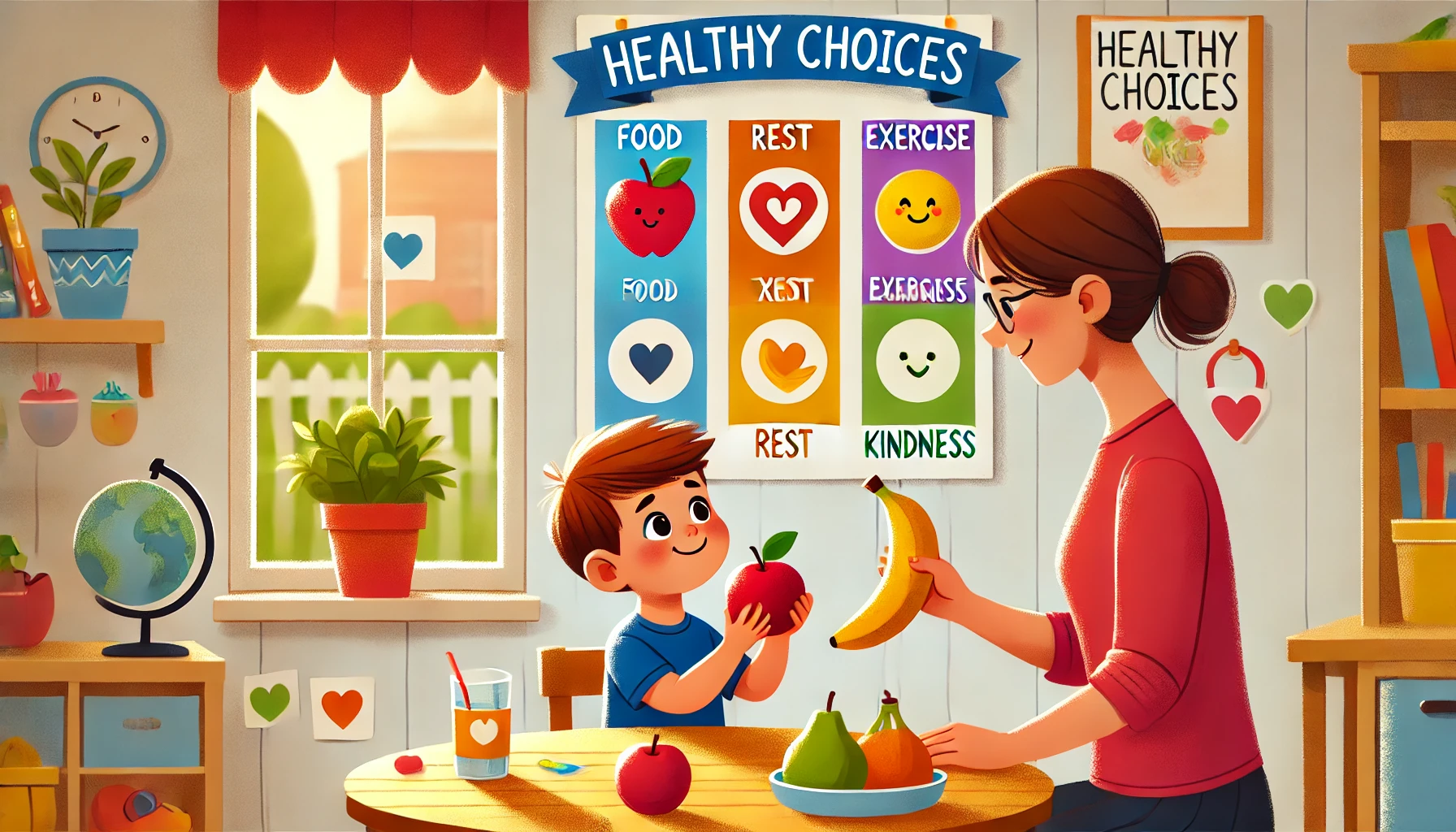How to Teach Young Children About Making Healthy Choices
From food to play, and from sleep to screen time, children make decisions every day. Teaching them how to make healthy choices early on empowers them to care for their bodies, minds, and feelings. Through fun routines, supportive conversations, and plenty of practice, kids can learn that healthy choices feel good—and are often fun too!
Why Teaching Healthy Choices Matters
- Supports physical and emotional development
- Builds lifelong habits
- Encourages independence and self-awareness
- Promotes safety and well-being
- Teaches responsibility for one’s body and mind
1. Explain What a “Healthy Choice” Is
Use simple, clear language.
Activity Idea:
- Say: “A healthy choice helps your body feel strong and your heart feel happy.”
- Use examples: eating fruit, drinking water, getting enough rest.
- Ask: “Can you think of a healthy choice you made today?”
What Kids Learn:
- What “healthy” means in different areas of life.
- That choices affect how we feel.
- Basic decision-making skills.
2. Use a Visual “Healthy Choices” Chart
Help children track and see their good habits.
Activity Idea:
- Make a chart with sections: food, rest, activity, kindness, and hygiene.
- Add stickers or smiley faces for each healthy choice made.
- Review the chart together at the end of each day.
What Kids Learn:
- Motivation through positive tracking.
- Visual reinforcement of good habits.
- Pride in consistency.
3. Talk About Food as Fuel
Connect eating with feeling good.
Activity Idea:
- Sort foods into “everyday” foods (fruits, veggies, whole grains) and “sometimes” foods (candy, chips).
- Involve kids in meal prep: “Let’s make a rainbow salad!”
- Ask: “What food gives you energy?”
What Kids Learn:
- Balanced nutrition basics.
- The connection between food and energy.
- Smart food choices.
4. Encourage Active Play Over Passive Screens
Movement is a healthy choice too!
Activity Idea:
- Dance, jump, play outside, or create obstacle courses.
- Limit screen time with timers and fun alternatives.
- Celebrate movement: “Your body is so strong when you run and play!”
What Kids Learn:
- The joy of physical activity.
- Boundaries with screen time.
- That moving their body feels good.
5. Teach About Rest and Sleep
Rest is just as important as play.
Activity Idea:
- Talk about how sleep helps the brain grow.
- Create a calming bedtime routine with quiet time, a story, and soft lighting.
- Track sleep habits with stars or stickers.
What Kids Learn:
- That sleep is essential.
- The value of routines.
- Self-care and relaxation.
6. Practice Decision-Making with Real Choices
Give them the power to choose wisely.
Activity Idea:
- Offer two healthy snack options: “Would you like apple slices or a banana?”
- Let them help plan activities: “Do you want to ride your bike or jump rope?”
- Talk about how they feel after making their choice.
What Kids Learn:
- Confidence in making decisions.
- Understanding of cause and effect.
- Self-awareness.
7. Talk About Feelings and Mental Health
Healthy minds matter too.
Activity Idea:
- Use a feelings chart to check in each day.
- Teach calming techniques like deep breathing or “hug your teddy” time.
- Say: “Taking care of your feelings is a healthy choice too.”
What Kids Learn:
- Emotional regulation skills.
- That mental health is part of well-being.
- How to ask for help when needed.
8. Celebrate Healthy Choices Every Day
Positive feedback goes a long way.
Activity Idea:
- Give specific praise: “You made a healthy choice by drinking water after playing!”
- Use a weekly “Healthy Hero” certificate.
- Reflect: “How did your healthy choices help you today?”
What Kids Learn:
- That their efforts matter.
- Encouragement builds motivation.
- Ownership of their habits.
Final Thoughts
Teaching young children about making healthy choices sets the foundation for a balanced, joyful life. Through supportive guidance, real-life examples, and playful learning, children discover how their decisions affect their bodies and minds. With every healthy choice, they grow stronger, happier, and more confident.
